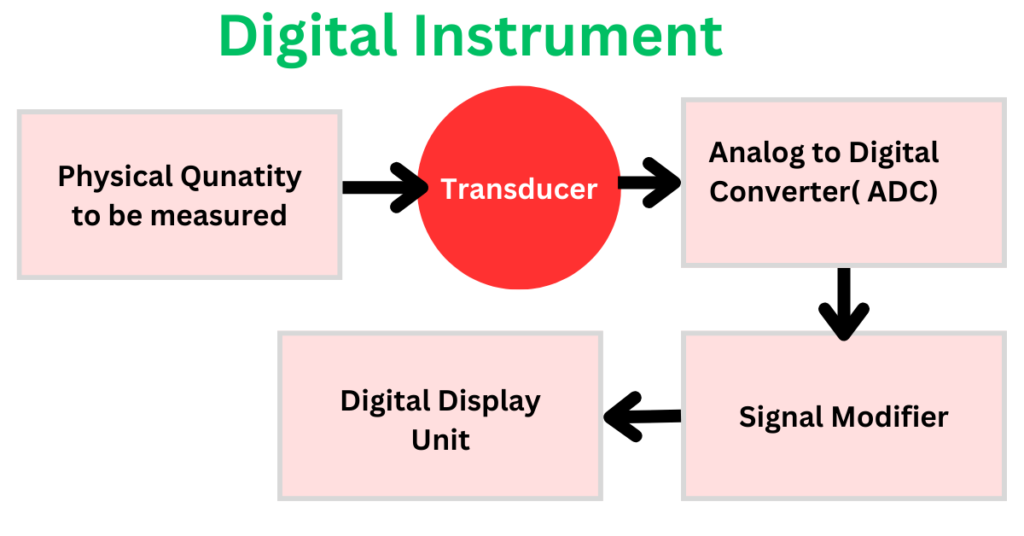Definition of Digital Instruments
Digital instruments are measurement devices that display values in a numerical form, usually on a digital readout or screen. They convert analog signals representing physical quantities like temperature, pressure, or voltage into digital form using analog-to-digital converters (ADCs). These instruments use a digital signal processing system to provide measurements that can be easily read and interpreted.
Characteristics of Digital Instruments
- Precision: They typically offer high precision due to their ability to represent values in discrete increments.
- Accuracy: They are generally more accurate than analog instruments, with less susceptibility to reading errors due to parallax or interpretation.
- Resolution: The resolution of a digital instrument is determined by the number of digits it can display, which indicates its ability to detect small changes in the measured quantity.
- Stability: They are less prone to drift and retain their calibration longer than analog devices.
- Digital Output: They can easily interface with computers and other digital systems, making them suitable for automated and remote measurement systems.
Construction of Digital Instruments

These instruments consist of the following key components:
- Input Sensor: Detects the physical quantity to be measured.
- Signal Conditioner: Adjusts the sensor signal to a suitable level and format for conversion.
- Analog-to-Digital Converter (ADC): Transforms the analog signal from the sensor into a digital signal.
- Processor: Calculates the measurement from the digital signal, applying any necessary corrections or calibrations.
- Display: Shows the final measurement in numerical form.
- Output Interface: Allows for the transmission of data to other devices or systems.
The construction of digital instruments can vary widely depending on their specific applications, from simple digital thermometers to complex digital oscilloscopes.
Advantages of Digital Instruments
- Readability: Direct numerical display eliminates reading errors associated with analog scales.
- Data Logging: Can easily store and recall measurements.
- Digital Interface: Facilitates connection to computers and other devices for data analysis and control.
- High Resolution and Accuracy: Improved measurement capabilities compared to analog.
- Integration: Can be easily integrated into control systems for process automation.
Disadvantages
- Complexity: They are generally more complex than analog instruments, which can make them more expensive to purchase and maintain.
- Power Dependency: Require a power source, which means they may not be suitable for all environments.
- Susceptibility to Electromagnetic Interference: Can be sensitive to external electrical noise, potentially affecting measurements.
- Limited by ADC: The resolution is constrained by the precision of the ADC.
Conclusion:
Digital instruments represent a significant advancement in measurement technology. They provide unparalleled accuracy and easily interpreted data, paving the way for further advancements in automated systems and smart instrumentation. As technology progresses, we can anticipate that digital instruments will continue to evolve, becoming even more integrated, intelligent, and versatile. This will further bridge the gap between the physical and digital worlds. In conclusion, digital instruments offer a promising future for measurement technology.